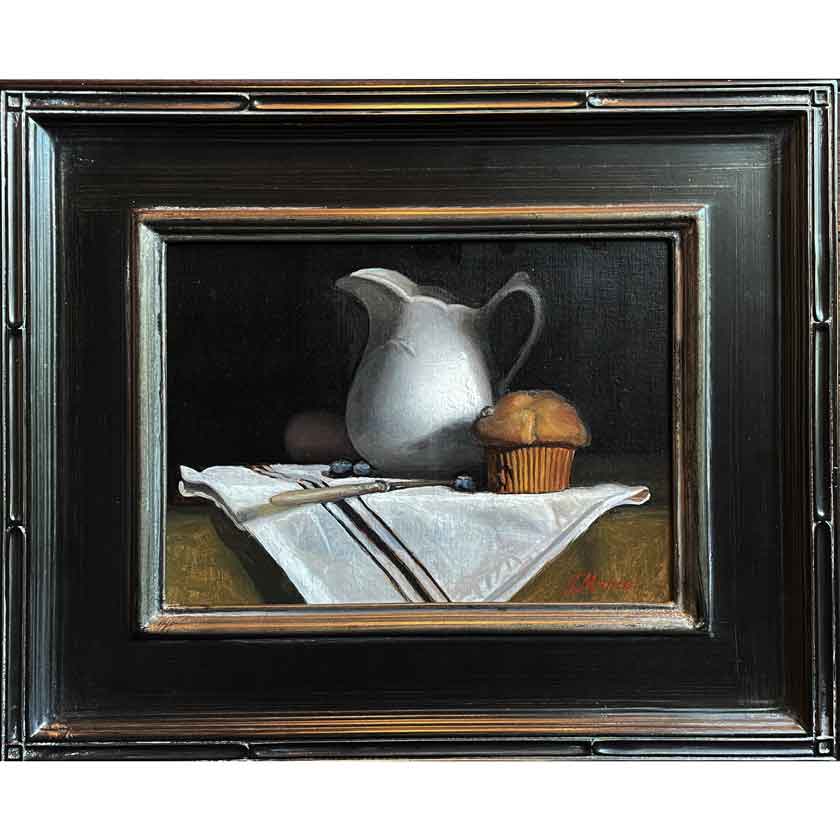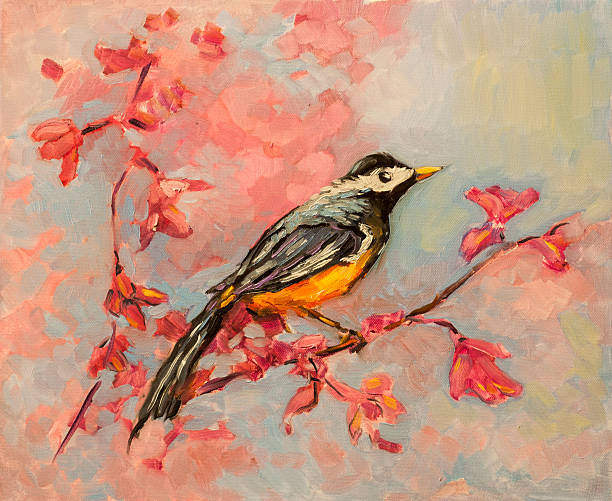Inspiring Design Inspirations with Oil Paintings for Sale
Inspiring Design Inspirations with Oil Paintings for Sale
Blog Article
Checking out Everything About Oil Paints: A Guide to Comprehending Their Charm and Value
Oil paintings have actually astounded target markets for centuries, providing a look right into the artistic mastery of numerous periods. Their abundant history is linked with cutting-edge strategies and extensive emotional expression. Understanding the products and techniques behind these art work can improve recognition. Additionally, the marketplace for oil paints provides chances for investors and collection agencies alike. As one explores this fascinating globe, the question develops: what makes an oil paint truly important?
The History of Oil Painting: A Journey With Time
Although oil paint has roots that date back to ancient times, it truly grew throughout the Renaissance, when artists found its flexibility and rich shade capacity. Early instances can be mapped to the 7th century, with strategies evolving significantly across cultures. The medium ended up being popular in Northern Europe in the 15th century, specifically through the jobs of musicians like Jan van Eyck, who pioneered its usage for thorough realistic look and vivid hues. This duration noted a separation from tempera paints, allowing for higher depth and appearance. As oil painting spread, it influenced many artists, causing masterpieces by prominent figures such as Leonardo da Vinci and Rembrandt. The medium's heritage continues, forming the art globe well into modern-day times.
Comprehending Oil Repaints: Materials and Techniques
As artists check out the world of oil paints, they encounter a varied range of products and methods that specify this tool. The key parts of oil paint consist of pigments, which offer shade, and drying out oils, such as linseed, that bind the pigments and assist in application. Different ingredients can change the paint's structure and drying out time, boosting flexibility. Methods like glazing, where clear layers are accumulated, and impasto, which includes using thick paint, enable various aesthetic results. Additionally, using brushes, combination blades, and also fingers can create special structures and surfaces. Comprehending these materials and methods enables artists to fully express their creativity and attain the desired impact in their art work.
The Function of Color in Oil Paints
Shade plays an essential duty in oil paintings, influencing both visual allure and psychological vibration. Comprehending shade concept essentials, including the relationships in between colors, can boost an artist's capability to convey mood and environment. In addition, understanding color mixing techniques allows for better depth and splendor in a painting's palette.

Shade Concept Fundamentals
Understanding shade theory is vital for musicians dealing with oil paints, as it creates the foundation for producing unified and visually appealing compositions. Shade theory includes the research of just how colors engage, the color wheel, and the partnerships between key, additional, and tertiary colors. Artists utilize corresponding shades to enhance contrasts and produce prime focus, while analogous colors advertise unity and cohesiveness within a piece. In addition, the concepts of cozy and cool shades influence the perception of depth and room in a paint. Realizing these principles permits artists to manipulate shade properly, assisting the customer's eye and communicating their intended message. Mastery of shade concept inevitably enriches an artist's capacity to communicate feelings and concepts via their job.
Psychological Effect of Color
The psychological impact of shade in oil paints plays an essential role in exactly how customers connect and perceive with art work. Colors evoke details feelings and state of minds, influencing the visitor's mood. Cozy hues like reds and oranges can produce a feeling of heat and power, while amazing tones such as blues and greens typically evoke calmness or introspection. Artists tactically choose color combinations to boost narrative elements, guiding the target market's psychological trip. The saturation and contrast of shades further enhance these effects, attracting focus and developing focus. Ultimately, the interplay of colors in oil paintings not just enhances their aesthetic charm however also acts as an effective medium for emotional expression, improving the audience's experience and analysis.
Color Combining Techniques
While lots of facets of oil painting add to the total make-up, understanding shade blending strategies is important for achieving wanted results and deepness. Color blending can be come close to through various methods, including the subtractive and additive processes. Additive blending includes combining shades of light, while subtractive mixing depends on pigments, where colors mix to create new tones. Musicians commonly use a restricted combination to create unified jobs, comprehending the relationships between key, second, and tertiary shades. Techniques such as glazing and scumbling additionally improve depth and luminosity. By skillfully mixing colors, an artist can evoke emotions, develop focal factors, and accomplish a sense of realistic look, inevitably raising the painting's visual and psychological effect.
Famous Oil Painters and Their Iconic Works

Renowned for their mastery of color and method, oil painters have actually created some of one of the most celebrated art work in history. Popular artists like Vincent van Gogh captivated audiences with his stirring brushwork in "Starry Night," while Claude Monet's "Impression, Daybreak" laid the groundwork for Impressionism. Leonardo da Vinci's "Mona Lisa" stays an enduring sign of artistic brilliant, showcasing his ability in capturing human expression. On the other hand, Rembrandt's "The Evening Watch" highlights his innovative use of light and darkness. Other remarkable figures include Pablo Picasso, that reinvented modern-day art with his bold testing in works like "Les Demoiselles d'Avignon," and Georgia O'Keeffe, whose vivid depictions of landscapes and blossoms assisted specify American innovation. Each musician's distinct design added considerably to the oil paint landscape.
Exactly how to Assess the High Quality of an Oil Painting
Assessing the top quality of an oil paint includes a careful assessment of workmanship techniques, along with an evaluation of shade and composition. Observing brushwork, layering, and the application of paint can reveal the musician's skill degree. Additionally, the interplay of shades and the general arrangement of elements add considerably to the paint's aesthetic value.
Analyzing Craftsmanship Methods
A thorough analysis of workmanship techniques is vital for identifying the quality of an oil paint. Evaluators need to first examine the application of paint; thick, distinctive brushstrokes might recommend a skilled hand, while extremely consistent applications can show a lack of deepness. oil paintings for sale. The layering strategy is likewise important; the presence of lusters and varied density can improve luminance and complexity. Additionally, the high quality of the materials made use of, such as the canvas and pigments, plays a considerable role in resilience and overall visual. Focus to information in elements like sides and shifts between shades reflects the click here artist's commitment to their craft. Inevitably, these techniques add to the painting's psychological impact and market value, serving as signs of the artist's ability and intent
Examining Shade and Structure
While evaluating the high quality of an oil paint, one should concentrate on the interplay of shade and composition, as these elements are essential to the artwork's general impact. Color choices can establish and evoke emotions state of mind; therefore, the artist's palette should be analyzed for consistency and comparison. A well-balanced structure directs the viewer's eye and develops a feeling of unity. Artists commonly use techniques like the regulation of thirds or leading lines to improve visual interest. Additionally, using light and shadow can add deepness, improving the three-dimensionality of the paint. Ultimately, an effective oil painting weds shade and composition, involving the audience and inviting a deeper recognition of the artist's vision and technique.
Caring for and Preserving Oil Paintings
Correct care and conservation of oil paints is necessary for keeping their honesty and longevity. To safeguard these artworks, it is important to present them away from direct sunlight, which can create fading and discoloration. Maintaining a stable environment with controlled temperature and moisture additional help in stopping damage. Cleaning must be done gently using a soft, dry fabric, avoiding any type of harsh chemicals that could damage the paint or varnish. Routine assessments for indications of degeneration, such as splitting or flaking, are suggested. When transporting or saving oil paints, correct extra padding and framework are necessary to prevent physical injury. Ultimately, attentive treatment adds to the aesthetic charm and value of oil paints with time.
The Marketplace for Oil Paints: Collecting and Spending
Understanding the market characteristics for oil paints is crucial for collection agencies and capitalists alike. The worth of these artworks is influenced by different variables, consisting of the artist's reputation, historical importance, and existing fads. Collection agencies typically seek pieces that reverberate directly while thinking about prospective gratitude in value. Auctions and galleries serve as key places for acquiring and marketing, with prices rising and fall based upon demand and rarity. Buying oil paints calls for research into the market, as well as an understanding of authenticity and provenance. Additionally, arising musicians might use chances for significant returns, while developed names can command high rates. On the whole, a critical strategy to accumulating can yield both aesthetic satisfaction and economic incentives.

Regularly Asked Questions
What Are the Environmental Impacts of Oil Paint Materials?
The ecological impacts of oil paint materials consist of the release of volatile natural substances (VOCs), unsafe waste generation, and resource extraction for pigments. These factors add to air pollution and ecological destruction, elevating concerns amongst ecologically conscious musicians and consumers.
Just How Do Various Canvases Affect Oil Painting Outcomes?
Various canvases affect oil painting results considerably. Surface, appearance, and absorbency quality can modify paint application, drying times, and color vibrancy. Musicians frequently pick details canvases to attain wanted effects and boost their artistic expression.
Can Oil Paintings Be Brought Back if Harmed?
If damaged, Oil paints can undoubtedly be recovered. Professional conservators utilize numerous strategies to repair tears, clean surfaces, and address staining, making sure that the artwork keeps its original elegance and worth for future generations.
What Are the Indicators of an Original Oil Paint?
The indicators of an initial oil painting include noticeable brush strokes, structure variants, and an uneven canvas weave (oil paintings for sale). Furthermore, credibility might be validated via provenance, trademarks, and the visibility of a varnish layer special to oil tools
How Has Innovation Influenced Modern Oil Painting Techniques?
Technology has significantly influenced modern-day oil painting methods by presenting digital devices for preparation, improved materials for appearance and longevity, and on-line systems for selling and sharing art, therefore broadening artists' innovative possibilities and target market reach. Oil painting has roots that date back to old times, it genuinely flourished during the Renaissance, when musicians found its convenience and rich shade potential. The psychological influence of shade in oil paintings plays an essential role in how viewers link and regard with art work. While lots of aspects of oil paint add to the overall structure, grasping shade mixing techniques is vital for attaining wanted results and depth. Reviewing the high quality of an oil paint involves a careful evaluation of craftsmanship methods, as well as an evaluation of color and structure. While assessing the high quality of an oil paint, one should concentrate on the interplay of shade and structure, as these aspects are basic to the art work's overall influence.
Report this page